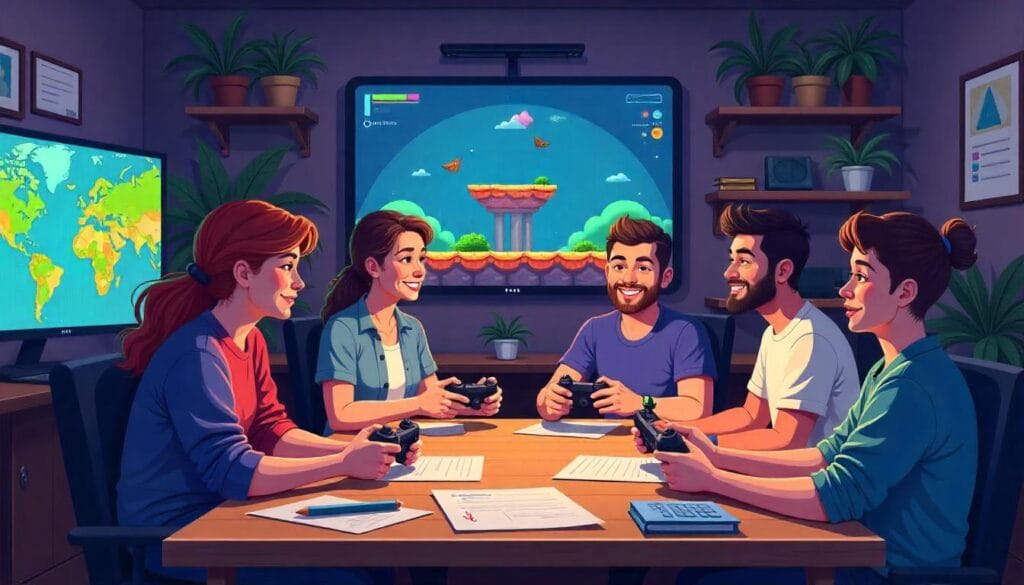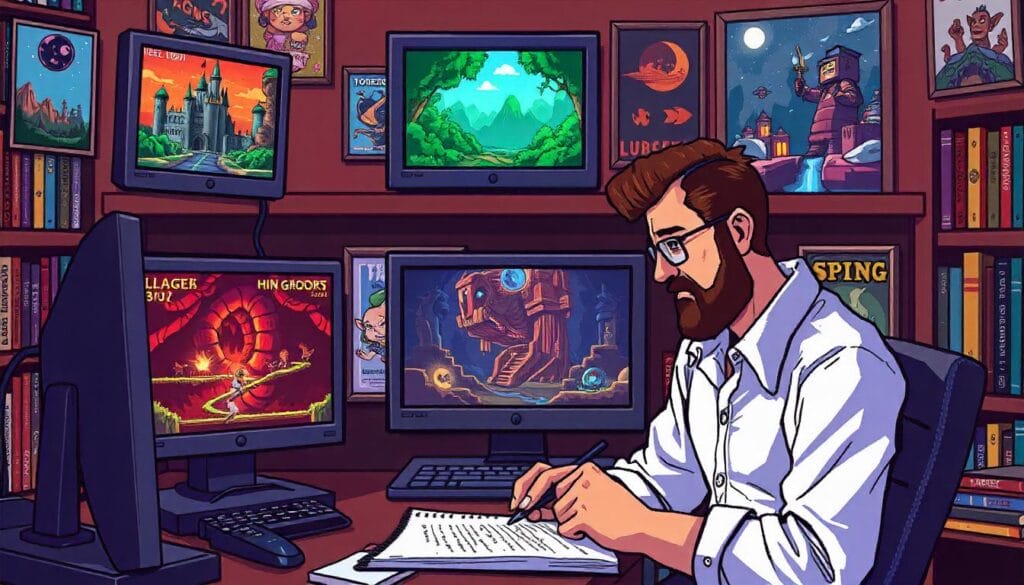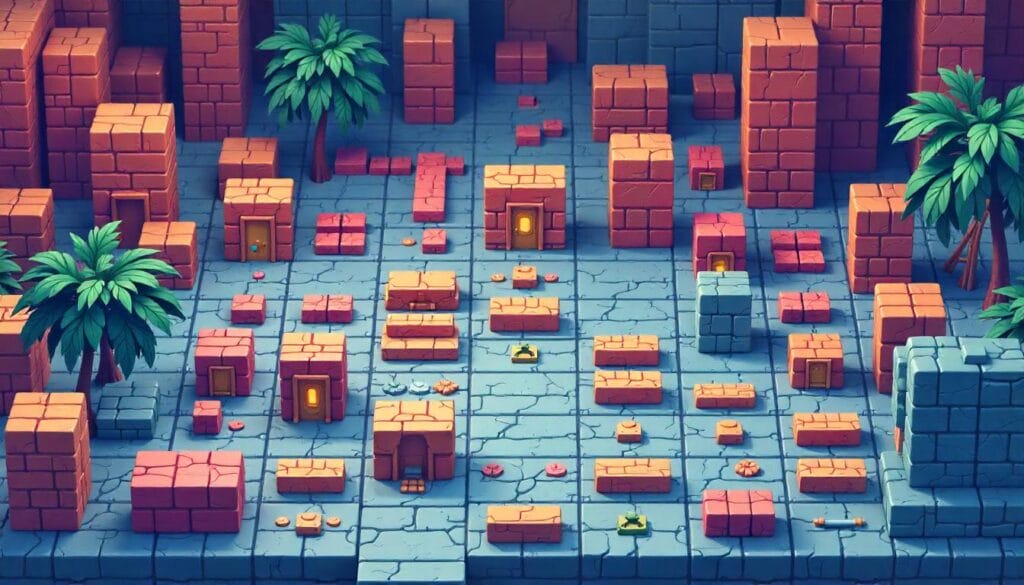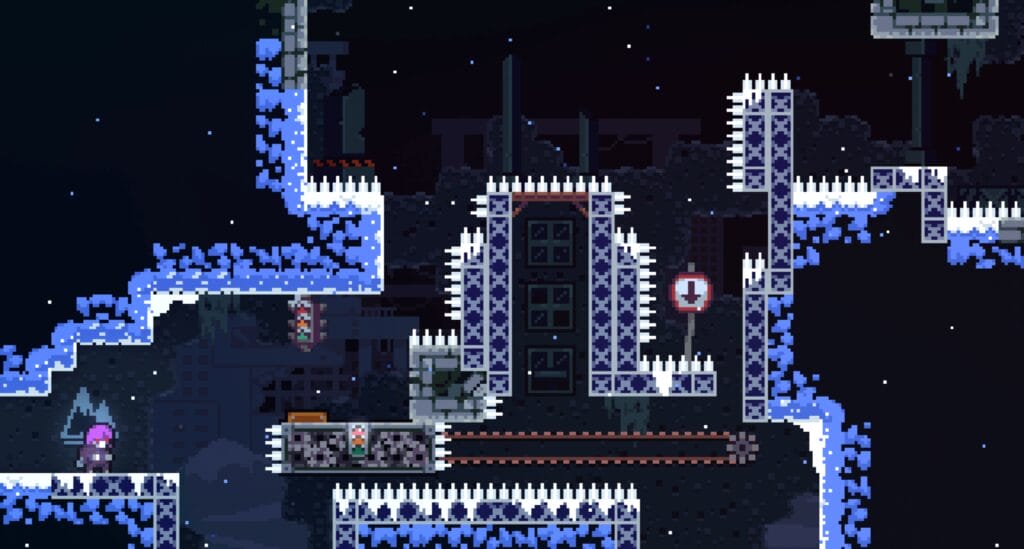Level design is one of the most crucial aspects of creating immersive and memorable game experiences. It’s where gameplay, storytelling, and artistry come together to form the world that players will explore and enjoy. For aspiring designers and even seasoned developers, there are a few “secret” tricks that can elevate your design and enhance your skills.
This guide dives into 10 essential tips to help you level up and create stunning levels. Whether you’re just starting or looking to refine your approach, these insights will improve your design efficiency and player engagement.
Key Takeaways:
- Test your designs frequently with real players to identify hidden issues.
- Study successful games to learn the best design principles.
- Use modular assets to speed up the workflow.
- Guide players with clear flow and visual landmarks.
- Learn from feedback and constantly improve your design.
1. Playtest Often with Real Players

Why Playtesting is Important
Playtesting allows you to see how real players interact with your levels and understand what works and what doesn’t. Even the best designers can’t anticipate every player’s reaction, so testing can highlight hidden flaws and unforeseen issues. The feedback from actual players is invaluable for refining your design.
How to Do It:
- Start Early: Begin playtesting early in development to catch issues before they become too complex to fix.
- Use a Variety of Players: Test with both experienced gamers and newcomers. Their feedback can reveal different aspects of your design.
- Observe, Don’t Instruct: Watch how players navigate without guidance. Are they getting lost or missing objectives?
Example:
A puzzle-platformer game might seem intuitive to you but could be confusing for players. Playtesting will reveal if players struggle with navigation, timing, or understanding the mechanics.
2. Analyze Successful Games

What to Look For
Studying top-tier games can reveal patterns and techniques that make them engaging and popular. Break down successful games to learn why players find them satisfying. This technique will help you adopt proven strategies and avoid common pitfalls.
Steps to Analyze:
- Identify the Best Levels: Choose levels that players frequently mention or discuss.
- Deconstruct Their Elements: Look at flow, mechanics, lighting, and other aspects that make the level effective.
- Take Notes on What Works: Identify strategies that align with your design goals.
Example:
In Dark Souls, level layouts are intricate and interconnected. Studying these elements can teach you about environmental storytelling, player flow, and challenge balance.
3. Use Modular Design for Efficiency

Benefits of Modular Design
Modular design involves creating reusable assets that can be assembled into multiple configurations. This approach saves time and allows for greater creativity in level construction. By reusing modular components, you can build and iterate levels more efficiently.
How to Implement Modular Design:
- Build a Library: Create assets like walls, doors, and objects that can fit together easily.
- Plan for Versatility: Design assets that work in various settings, like urban and rural scenes.
- Test Combinations: Experiment with different configurations to see how assets look in different environments.
Example:
Games like The Sims use modular assets extensively. Players can create endless variations of rooms and houses using the same pieces, providing flexibility and creativity.
4. Focus on Player Flow
What is Player Flow?
Player flow is the smooth progression through a level, guiding players naturally from one point to another. When flow is effective, players can intuitively navigate without feeling lost or frustrated.
Steps to Improve Player Flow:
- Define Clear Paths: Use lighting, color, and placement to direct players.
- Avoid Overcrowding: Too many options or objects can overwhelm players.
- Provide Subtle Cues: Arrows, tracks, or lighting can gently guide players without being obvious.
Example:
In Portal, players are guided through rooms using visual cues like lit doorways and contrasting colors. This helps players understand where to go next without explicit instructions.
5. Create Visual Landmarks

Why Landmarks Matter
Visual landmarks help players orient themselves in a level. By placing unique and memorable objects, you can prevent players from feeling lost and keep them engaged in the experience.
Tips for Effective Landmarks:
- Make Them Distinct: Use colors, shapes, or unique features to make landmarks stand out.
- Position Strategically: Place landmarks at key decision points or crossroads.
- Use for Orientation: Players should be able to recognize and return to these landmarks as reference points.
Example:
In The Legend of Zelda: Breath of the Wild, the Divine Beasts and other landmarks help players navigate the expansive world, giving them focal points for exploration.
6. Utilize Lighting to Guide and Set the Mood

How Lighting Affects Gameplay
Lighting serves as a guide and also creates the atmosphere for your level. Well-placed lights can lead players towards objectives, highlight important areas, and enhance the overall mood of the scene.
Techniques for Using Lighting:
- Lead Players with Light: Bright lights near doors or objectives subtly guide players.
- Create Contrast: Use shadows to emphasize important elements and add depth.
- Adjust Mood with Color: Warm lighting can feel inviting, while cool lighting can feel eerie or mysterious.
Example:
In Bioshock, lighting directs players through dark, immersive environments, guiding them while building tension and atmosphere.
7. Master Environmental Storytelling
What is Environmental Storytelling?
Environmental storytelling uses surroundings to convey the game’s backstory or mood without words. From scattered objects to abandoned spaces, visual clues provide context, making the world feel alive and layered.
How to Implement:
- Add Small Details: Include objects that suggest what happened in a space.
- Tell Stories through Decor: Use worn-out or well-maintained objects to indicate age and history.
- Avoid Overloading: Use subtle hints instead of heavy-handed messages.
Example:
In Fallout 4, ruined buildings, scattered belongings, and messages tell the story of a post-apocalyptic world, creating an atmosphere that players feel without explicit narration.
8. Design Around Core Game Mechanics

Why Core Mechanics Matter
Your core mechanics are the fundamental actions players will perform. Levels should enhance these mechanics by encouraging players to experiment and refine their skills.
How to Incorporate Mechanics:
- Build Levels that Encourage Skill Use: Create sections where players have to use core mechanics to progress.
- Provide Gradual Challenges: Increase complexity as players grow comfortable with the mechanics.
- Introduce Mechanics Early: Familiarize players with tools and actions they’ll rely on.
Example:
In Celeste, levels are specifically designed around platforming mechanics. Players are challenged to master each move in progressively more complex ways.
9. Balance Complexity and Simplicity
Why Balancing Complexity is Key
Too much complexity can overwhelm players, while too much simplicity can bore them. The right balance provides enough challenge to keep players engaged without being overwhelming.
Tips for Balance:
- Simplify Layouts: Use minimalism in areas where players need to focus.
- Add Detail Gradually: Introduce complex elements as players progress.
- Test for Overload: Ensure that too much isn’t happening at once.
Example:
In Hollow Knight, levels start with simpler layouts and gradually introduce more intricate and interconnected paths, allowing players to explore at a comfortable pace.
10. Seek and Embrace Feedback Continuously
Importance of Feedback
Feedback is one of the most valuable resources for a designer. Regularly seeking and implementing feedback improves the quality and playability of your levels.
How to Gather and Implement Feedback:
- Use Beta Testing: Open your game up for early feedback.
- Join Design Communities: Engage with other designers and gamers for constructive criticism.
- Act on Feedback: Identify recurring issues and address them.
Example:
Games in early access on platforms like Steam frequently use player feedback to polish and refine the experience, responding to community suggestions to make better designs.
Conclusion: Designing Engaging, Memorable Levels
Level design is a craft that requires a blend of creativity, technical skills, and player empathy. By following these 10 secret tricks, you can level up your design skills and create levels that are both immersive and enjoyable. From understanding player flow to using lighting strategically, each tip helps build engagement and retention.
Summary Table of Tips
| Secret Trick | Key Benefit |
|---|---|
| Playtest Often | Real feedback to catch design flaws |
| Analyze Successful Games | Learning proven strategies |
| Use Modular Design | Efficient and flexible level building |
| Focus on Player Flow | Guiding players smoothly |
| Create Visual Landmarks | Helps players orient themselves |
| Utilize Lighting | Guides players and sets the mood |
| Master Environmental Storytelling | Creates depth and immersion |
| Design Around Core Mechanics | Enhances gameplay and engagement |
| Balance Complexity and Simplicity | Keeps gameplay engaging |
| Seek and Embrace Feedback | Continuously improves |
Level Design FAQ
1. How can I ensure my level designs are engaging for players?
One of the most crucial aspects is focusing on player flow. This means designing levels that guide players smoothly and intuitively from one point to another. You can achieve this by:
- Defining clear paths using lighting, color, and strategic object placement.
- Avoiding overcrowding the environment with too many options or objects, which can overwhelm players.
- Providing subtle cues, such as arrows, tracks, or lighting, to gently guide players without being overly obvious.
2. What are some effective ways to tell a story through level design?
You can use environmental storytelling, which relies on the surroundings to convey backstory and mood without explicit words. To implement this:
- Add small details that suggest past events, like scattered objects or signs of struggle.
- Tell stories through decor, using worn-out or well-maintained objects to indicate age and history.
- Avoid overwhelming the player with too much information; subtle hints are often more effective.
3. How do I make sure players don’t get lost in my levels?
Create visual landmarks – unique and memorable objects that help players orient themselves.
- Make landmarks distinct using colors, shapes, or unique features.
- Position them strategically at key decision points or crossroads.
- Ensure they are easily recognizable and can serve as reference points for players.
4. What role does lighting play in level design?
Lighting is crucial for both guidance and setting the mood of your level.
- Use bright lights near doors or objectives to subtly guide players.
- Create contrast with shadows to emphasize important elements and add depth.
- Adjust the mood by using warm lighting for inviting spaces and cool lighting for eerie or mysterious atmospheres.
5. How can I design levels that effectively utilize core game mechanics?
Ensure your levels encourage players to use and master the core mechanics of your game.
- Build sections where players must utilize specific mechanics to progress.
- Gradually increase the complexity of challenges as players become more comfortable with the mechanics.
- Introduce core mechanics early in the game to familiarize players with the tools and actions they’ll be using.
6. What is modular design and how can it benefit my level design process?
Modular design involves creating reusable assets that can be assembled in various configurations. This approach:
- Saves time: You can build and iterate levels more efficiently by reusing components.
- Increases creativity: Allows for greater flexibility in constructing levels.
To implement modular design, build a library of assets like walls, doors, and objects, ensuring they are versatile enough for various settings.
7. How do I find the right balance between complexity and simplicity in my level design?
Too much complexity can overwhelm players, while too little can be boring. Aim for a balance that provides challenge without frustration.
- Simplify layouts in areas that require focus.
- Gradually introduce complex elements as players progress.
- Regularly test your levels to ensure players aren’t overloaded with too much happening at once.
8. What is the best way to get feedback on my level designs?
Feedback is essential for improving your designs. Gather feedback by:
- Conducting playtests with real players to observe their interactions and gather direct input.
- Joining design communities to engage with other designers and gamers for constructive criticism.
- Actively seeking feedback from beta testers and early access players.
Always be open to feedback and consider it carefully when refining your level designs.


















